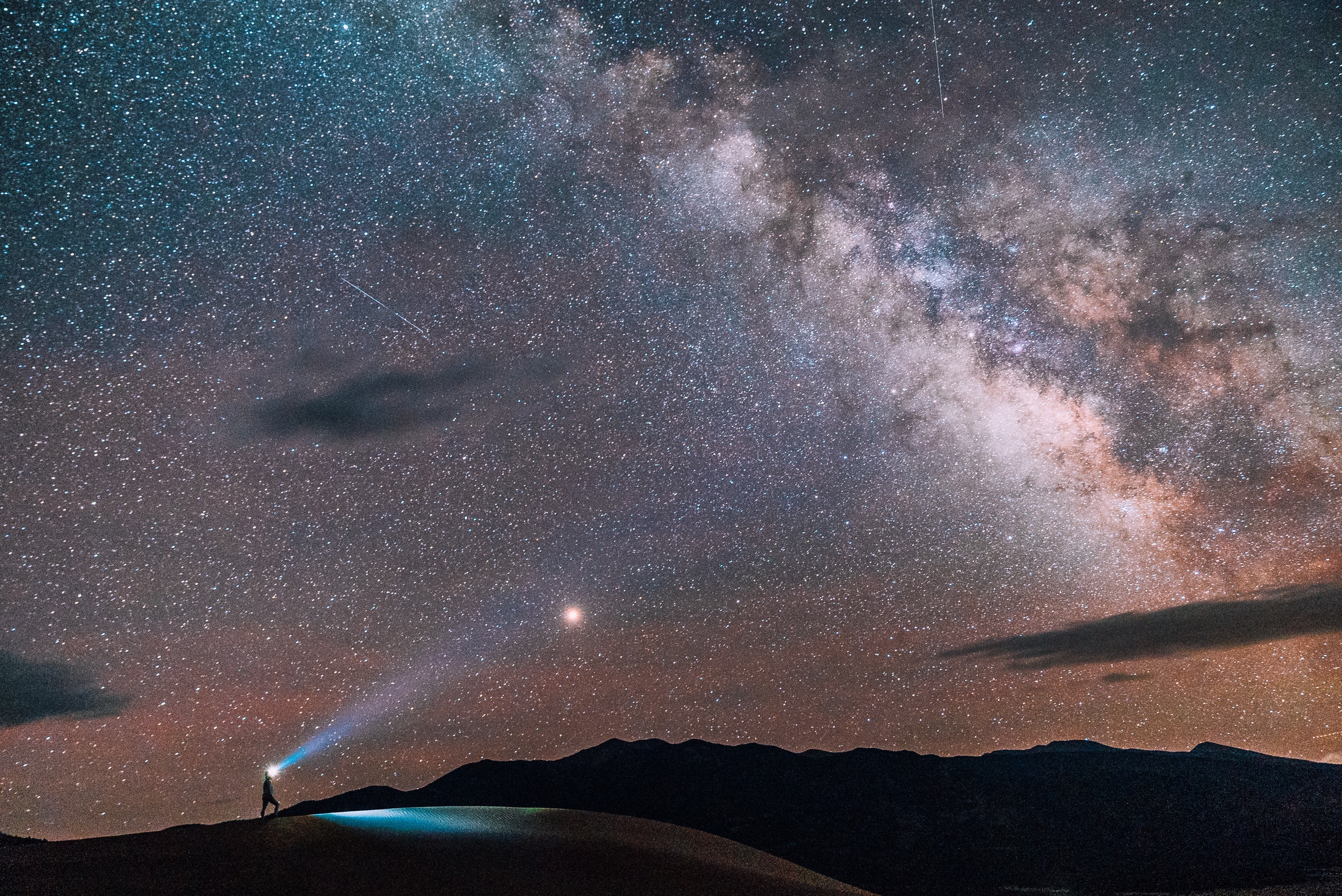
More than 5,000 tons of extraterrestrial dust fall to Earth each year
Science Daily -- Date: April 8, 2021 Source: CNRS Summary: Every year, our planet encounters dust from comets and
asteroids. These interplanetary dust particles pass through our atmosphere and give rise to shooting stars. Some of them reach the ground in the form of micrometeorites. An international program conducted for nearly 20 has determined that 5,200 tons per year of these micrometeorites reach the ground.
Every year, our planet encounters dust from comets and asteroids. These interplanetary dust particles pass through our atmosphere and give rise to shooting stars. Some of them reach the ground in the form of micrometeorites. An international program conducted for nearly 20 years by scientists from the CNRS, the Université Paris-Saclay and the National museum of natural history with the support of the French polar institute, has determined that 5,200 tons per year of these micrometeorites reach the ground. The study will be available in the journal Earth & Planetary Science Letters from April 15.
Micrometeorites have always fallen on our planet. These interplanetary dust particles from comets or asteroids are particles of a few tenths to hundredths of a millimetre that have passed through the atmosphere and reached the Earth's surface.
To collect and analyse these micrometeorites, six expeditions led by CNRS researcher Jean Duprat have taken place over the last two decades near the Franco-Italian Concordia station (Dome C), which is located 1,100 kilometres off the coast of Adélie Land, in the heart of Antarctica. Dome C is an ideal collection spot due to the low accumulation rate of snow and the near absence of terrestrial dust.
These expeditions have collected enough extraterrestrial particles (ranging from 30 to 200 micrometres in size), to measure their annual flux, which corresponds to the mass accreted on Earth per square metre per year.
advertisement
If these results are applied to the whole planet, the total annual flux of micrometeorites represents 5,200 tons per year. This is the main source of extraterrestrial matter on our planet, far ahead of larger objects such as meteorites, for which the flux is less than ten tons per year.
A comparison of the flux of micrometeorites with theoretical predictions confirms that most micrometeorites probably come from comets (80%) and the rest from asteroids.
This is valuable information to better understand the role played by these interplanetary dust particles in supplying water and carbonaceous molecules on the young Earth.
Notes
Comets are made of dust and ice. They come from far distances, from the Kuiper belt to the outer reaches of the Solar System. As they approach the Sun, comets become active through the sublimation of their ices and release cometary dust.
An asteroid is a mainly rocky celestial body of between a few hundred metres to several kilometres in size. The majority of these bodies are located in the asteroid belt between Mars and Jupiter.
This program has received funding from the IPEV, the CNRS, the CNES, the ANR, the Domaine d'intérêt majeur ACAV+, which supports research in the Ile-de-France region in the fields of astrophysics and the conditions of the appearance of life, as well as from LabEx P2IO. The French Polar Institute (IPEV) and its Italian counterpart (PNRA) provided the logistical support needed to carry out the field collection program.
The French laboratories involved are: the Laboratoire de physique des deux infinis -- Irène Joliot-Curie (CNRS / Université Paris-Saclay / Université de Paris), the Institut de minéralogie, de physique des matériaux et de cosmochimie (CNRS / National museum of natural history / Université Sorbonne) and the Institut des sciences moléculaires d'Orsay (CNRS / Université Paris-Saclay). Three foreign laboratories are also involved: the Catholic University of America and NASA's Goddard Space Flight Center in the United States, and the University of Leeds in the United Kingdom.
1 micrometre (µm) is equal to 0.001 millimetres, or one thousandth of a millimetre.
make a difference: sponsored opportunity
Story Source:
Materials provided by CNRS. Note: Content may be edited for style and length.
Journal Reference:
J. Rojas, J. Duprat, C. Engrand, E. Dartois, L. Delauche, M. Godard, M. Gounelle, J.D. Carrillo-Sánchez, P. Pokorný, J.M.C. Plane. The micrometeorite flux at Dome C (Antarctica), monitoring the accretion of extraterrestrial dust on Earth. Earth and Planetary Science Letters, 2021; 560: 116794 DOI: 10.1016/j.epsl.2021.116794
Cite This Page:
MLA
APA
Chicago
CNRS. "More than 5,000 tons of extraterrestrial dust fall to Earth each year." ScienceDaily. ScienceDaily, 8 April 2021.


 How to resolve AdBlock issue?
How to resolve AdBlock issue? 